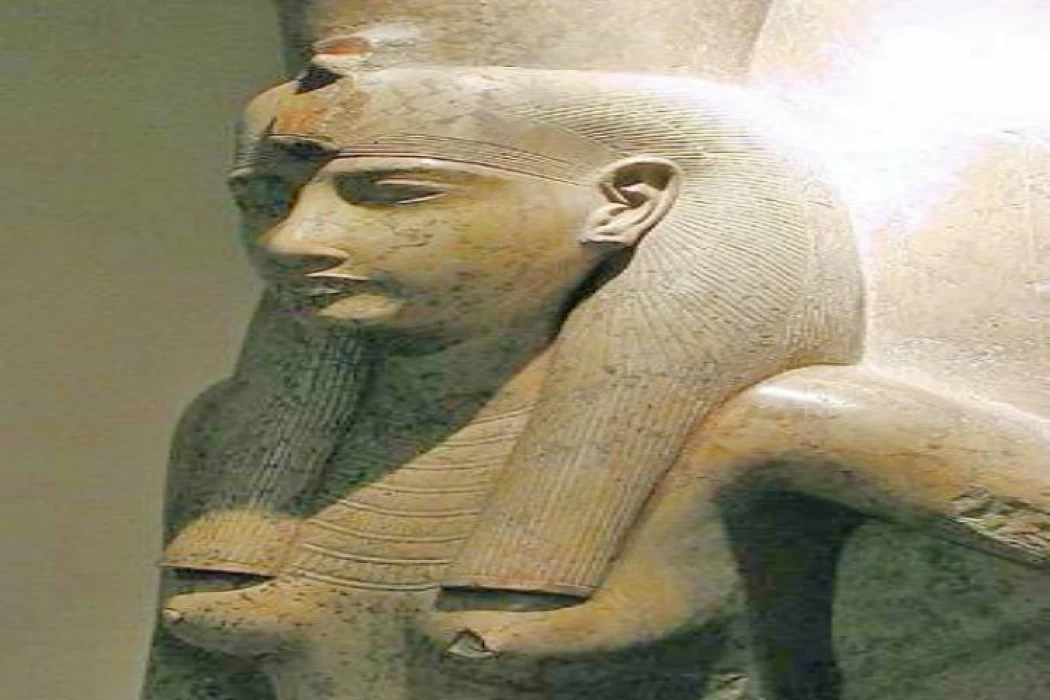
Goddess Mut | Egyptian Goddess of Heaven
Fact About Goddess Mut
Mut (or Mut), whose name means “mother”, symbolizes maternal values, she is one of the oldest divinities of the Egyptian pantheon. She is also a dangerous Goddess when she is one of the forms of the “Distant Goddess” (Hathor), assimilated to Sekhmet. In the Hellenistic period (305-30) she was assimilated by the Greeks to the Goddess Hera, wife of Zeus.
She is represented in the form of a vulture, or as a woman wearing on her head the remains of a vulture, sometimes surmounted by the pschent (the double crown of Egypt), holding a papyrus scepter and the sign Ankh. When she is one of the forms of the "Distant Goddess" she is then represented in the form of a lioness with sharp claws. She was also sometimes represented with wings as a Goddess of the sky, appearing as a vulture or as a cow behind Amun emerging from the waters of the Nun.
Her elements were: Earth, air, fire. Her colors: Blue, red and yellow. Her festival was celebrated on the 29th of the month of Epiphi in the Shemu season. She was also celebrated at the festivals specific to Amun such as those of the Theban triad: The Opet festival and the "Beautiful festival of the valley".
Her place of worship was Isherou, a village south of Karnak. She is venerated there, in her sanctuary located south of the temple of Amun, called Hout-Mou, under the aspect of Sekhmet, but more generally that of a woman wearing the white crown or a vulture. Other sanctuaries are attested at Bubastis, Hermonthis, Memphis, Tanis, Sais and in the oases of Kharga and Dakhla.
She is associated with the Theban triad (Amun, Mut and Khonsu) where she is at the same time the wife, mother and daughter of Amun and the mother of the moon god Khonsu. During the 18th dynasty (1549-1295), her cult became important, replacing in Thebes that of the Goddess Amunet, wife of Amun. Having no children, she decided to adopt Montu, then Khonsu, Montu declining the offer. She was among the sun (Amun-Re) and the moon (Khonsu) as the third eye showing cosmic perfection and promoting the flooding of the Nile.
She is mentioned in the Book of the Dead helping the deceased to reach the afterlife and preventing them from decomposing. She appears on the walls of many temples, alongside her husband Amun, as “Mistress of the Nine Bows” (symbol of all enemies of Egypt).
Goddess Mut
Mut, the goddess of heaven who had the wind god Amun as her husband, due to her name is known as the mother of all creation, she and her husband were idolized in Thebes, represented with a double crown and an ornament in the form of a vulture on top of it, he was seen wearing a bright blue or red suit and in his hands, he carried a papyrus and the ankh that was the key to life.
She was also recognized as a world mother, eye of Ra, and lady of heaven, they also represented her through hieroglyphs as a vulture for being considered maternal animals.
This divinity was shown with wings for being the deity of the firmament among all the Egyptian gods, she was also frequently seen as a cow behind her husband or as a lioness for being a warrior.
Mout (or Mut), whose name means “mother,” symbolizes maternal values and is one of the oldest deities in the Egyptian pantheon. She is also a dangerous goddess when she takes the form of the “Distant Goddess” (Hathor), assimilated to Sekhmet. She was adopted by the Greeks as the goddess Hera, Zeus's wife, during the Hellenistic Period (305–30). Mother of the World, Eye of Ra, Queen of Goddesses, Lady of the Sky, and Mother of the Gods were some of her titles.
Her place of worship was Isheru, a village south of Karnak. She is venerated there, in her sanctuary located south of the Temple of Amun, called Hout-Mou, in the guise of Sekhmet, but more generally as a woman wearing a white crown or a vulture. Other shrines are attested in Bubastis, Hermonthis, Memphis, Tanis, Saïs, and in the oases of Kharga and Dakhla.
Egyptian Goddess of Heaven
In this way, the sun was represented by her husband Amun-Ra and the moon god Khonsu, which is why Mut symbolizes the third eye that reveals the universal superiority which cooperated in the flood of the Nile.
This goddess was requested in the Book of the Dead to prevent a mummy from rotting, a few words were said holding an image of her that had 3 heads: the first was the head of the goddess Pajet, ''a minor Egyptian deity, from the time of the Middle Kingdom'' with two feathers, then it was a human head with two crowns and finally a vulture head with two feathers.
She is associated with the Theban triad (Amon, Mut, and Khonsu), where she is both the wife, mother, and daughter of Amon and the mother of the moon god Khonsu... During the 18th Dynasty (1549-1295), her cult became important, replacing that of the goddess Amonet, wife of Amun, in Thebes. Having no children, she decided to adopt Montu, then Khonsu, as Montu declined the offer. She was between the sun (Amon-Re) and the moon (Khonsu) as the third eye, showing cosmic perfection and promoting the flooding of the Nile.
She is mentioned in the Book of the Dead as helping the deceased reach the afterlife and preventing them from decomposing. She appears on the walls of many temples alongside her husband Amun as “Mistress of the Nine Bows” (symbol of all the enemies of Egypt).














